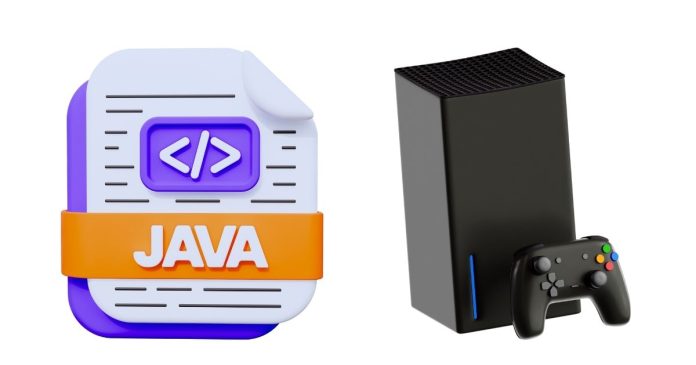Java, a widely used programming language, offers several utilities for interacting with the user, and one such utility is the Console Class. While many developers are familiar with using System.out.println() for output and Scanner for input, the Console class provides a more streamlined way to handle console-based input and output, especially when working with password inputs or handling terminal-specific tasks.
In this blog post, we will explore the Console Class in Java, its usage, methods, and examples to help you understand how and when to use it in your Java applications.
What is the Java Console Class?
The Console class in Java is a part of the java.io package and provides methods for reading text from the console and writing text to the console. It’s especially useful when you’re working with command-line applications and need to handle input/output operations with more control. Unlike System.in or System.out, the Console class is specifically designed for use in console-based environments.
The Console class is a simple and efficient way to interact with the user in environments where GUI is not an option, such as terminal-based applications.
Key Features of the Console Class
- Password Handling: One of the standout features of the
Consoleclass is its ability to handle password input securely by not displaying the input characters on the screen. - Convenient Input and Output: It simplifies reading input from the console and writing output to the console.
- Integration with System Console: It is directly tied to the system’s console, making it ideal for command-line tools or terminal applications.
How to Use the Console Class in Java?
To use the Console class, you need to first obtain a Console object. You can retrieve it by calling the System.console() method. However, note that the System.console() method will return null if the program is not being run in a console environment (e.g., if it’s run from an IDE like Eclipse or IntelliJ, which doesn’t provide a true console).
Here’s the basic structure of how to get a Console object:
Console console = System.console();
Once you have a reference to the Console object, you can use it to read and write text from and to the console.
Commonly Used Methods in the Console Class
The Console class provides several useful methods for handling console-based input and output. Here are the most common methods:
readLine(): Reads a line of text from the console.String input = console.readLine("Enter your name: ");This method can optionally take a prompt message, which will be displayed to the user.
readPassword(): Reads a password from the console. It hides the characters as the user types, making it ideal for sensitive inputs like passwords.char[] password = console.readPassword("Enter your password: ");Note: The
readPassword()method returns achar[](character array) instead of aStringfor security reasons.printf(): Allows formatted output, similar toSystem.out.printf().console.printf("Hello, %s! Welcome to the program.\n", name);format(): Similar toprintf(), this method is used for formatted output.console.format("Your balance is: %.2f\n", balance);flush(): Writes the data in the console buffer to the output.console.flush();
Example: Simple Console Application
Let’s take a look at an example that demonstrates how to use the Console class to interact with the user:
import java.io.Console;
public class ConsoleExample {
public static void main(String[] args) {
// Obtain the Console object
Console console = System.console();
if (console == null) {
System.out.println("No console available");
return;
}
// Read user input
String name = console.readLine("Enter your name: ");
console.printf("Hello, %s!\n", name);
// Read password securely
char[] passwordArray = console.readPassword("Enter your password: ");
String password = new String(passwordArray);
console.printf("Password received successfully.\n");
// Use formatted output
double balance = 1234.56;
console.format("Your balance is: %.2f\n", balance);
}
}
Output:
Enter your name: John
Hello, John!
Enter your password: ********
Password received successfully.
Your balance is: 1234.56
Things to Keep in Mind
- Running in an IDE: As mentioned earlier,
System.console()may returnnullwhen running the program in an IDE like Eclipse or IntelliJ, because these environments don’t provide a true console. To test theConsoleclass, it is best to run the program in a terminal or command prompt. - Handling Password Input: The
readPassword()method returns a character array (char[]) instead of a string. This is a security feature, as passwords stored inchar[]are easier to clear from memory than strings, which are immutable and may persist in memory longer. - Null Console: In cases where
System.console()returnsnull, it’s important to check for this scenario and provide alternative input methods, such as usingScannerfor input in environments without a console. - Platform Dependency: The behavior of the
Consoleclass may vary slightly across different platforms. It’s always good practice to check fornullvalues when using theConsoleclass, especially when portability is a concern.
Why Use the Console Class?
While you can achieve console-based input/output using Scanner or System.out, the Console class is a better choice for specific use cases:
- Password Input: The
Consoleclass securely handles password input without showing characters as the user types. - Better User Interaction: The
Consoleclass provides methods likeprintf()andformat(), which allow for more advanced formatting and streamlined output. - Terminal Applications: If you’re developing a command-line or terminal-based application, the
Consoleclass is more efficient and provides better integration with the system’s console.
Conclusion
The Console class in Java is a powerful tool for handling user input and output in console-based applications. It simplifies many tasks, such as reading passwords securely, providing formatted output, and improving user interaction with command-line programs. While it may not always be available in GUI environments or IDEs, it is an essential tool for developing robust terminal-based Java applications.
By understanding how to use the Console class effectively, you can create more secure, user-friendly, and efficient console applications in Java. Whether you’re working on system administration tools, simple command-line utilities, or password-protected systems, the Console class is a valuable asset to any developer’s toolkit.
Happy coding!


